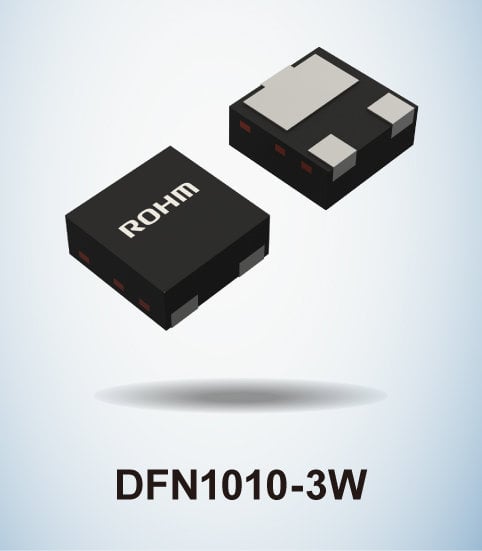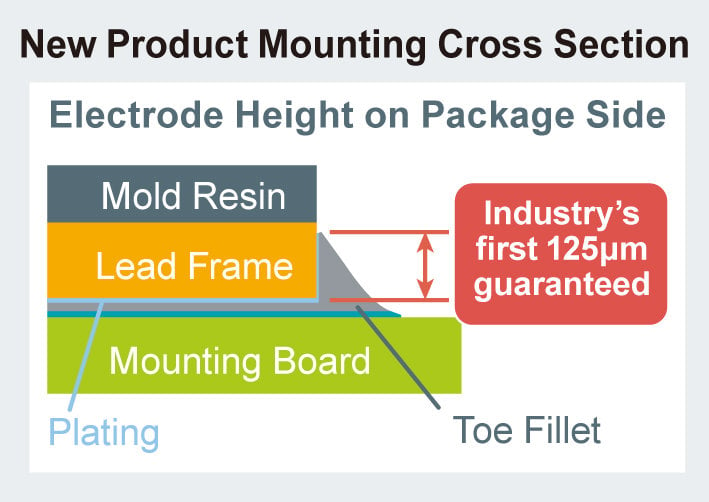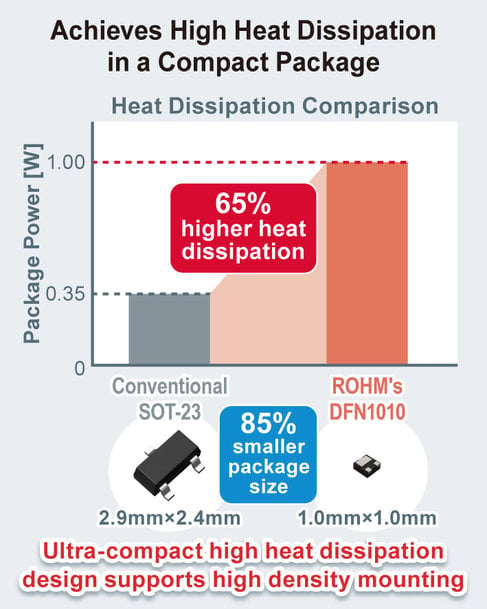Reducing the Size of Automotive Designs with Ultra-Compact 1mm² MOSFETs
Improving heat dissipation and mounting reliability.

ROHM has released the ultra-compact AEC-Q101 qualified MOSFETs, RV8C010UN, RV8L002SN and BSS84X, best-in-class 1mm² size that deliver automotive-grade reliability. The products are suitable for high-density applications such as ADAS and automotive ECUs.
The continuing electrification of vehicles in recent years has significantly increased the number of electronic and semiconductor components used per vehicle. Consequently, the need for a dramatic increase in component density has become even more important. For example, the average number of multilayer ceramic capacitors and semiconductor components installed in a single automotive ECU is expected to increase by 30%, from 186 in 2019 to 230 in 2025. At the same time, for high density automotive applications that demand greater miniaturization, studies are currently underway on bottom electrode packages that can achieve excellent heat dissipation in a compact form factor.
For automotive parts, automated optical inspection (AOI) is performed after mounting to ensure reliability, but with bottom electrode components the solder joint cannot be verified since the terminals are not visible, making it difficult to conduct visual inspection that meets automotive standards. ROHM has solved these issues with its original Wettable Flank technology that ensures an unprecedented side electrode height of 125µm in the 1.0mm × 1.0mm size, and leading to increased adoption by a number of vehicle manufacturers.
Extremely high solder mounting reliability is achieved during AOI in automotive systems that require high quality. In addition, the new bottom electrode package simultaneously provides both breakthrough miniaturization and high heat dissipation, making it ideal for ADAS and automotive ECUs featuring higher board densities.
In addition to MOSFETs, ROHM is committed to continuing to expand its product lineup of bipolar transistors and diodes.

Key Features
1. Original Wettable Flank technology ensures a side electrode height of 125µm
With conventional bottom electrode packages, the sides of the lead frame cannot be plated, making it difficult to conduct AOI to verify the solder height required for automotive applications. In contrast, ROHM’s new MOSFETs leverage proprietary Wettable Flank technology to ensure a breakthrough side electrode height of 125µm in the 1.0mm × 1.0mm size. This enables stable toe fillet formation even with bottom electrode packages, allowing the solder condition to be verified by AOI after mounting.

2. Ultra-compact high heat dissipation MOSFETs support high density mounting
ROHM’s new MOSFETs achieve the same performance as 2.9mm × 2.4mm packages (SOT-23 packages) but in the smaller 1.0 × 1.0mm package (DFN1010 packages), reducing mounting area by approx. 85%. In addition, adopting a high heat dissipation bottom electrode structure improves heat dissipation (which normally decreases with size) by up to 65% over SOT-23. As a result, the RV8C010UN, RV8L002SN, and BSS84X are ideal for automotive ECUs and ADAS that are seeing higher board densities following increasing performance.

Lineup

Application Examples
Suitable for switching and reverse connection protection applications
- Autonomous driving control ECUs
- Car infotainment
- Engine control ECUs
- Drive recorders
- ADAS applications
Availability: In mass production
Terminology
AEC-Q101 Automotive Reliability Standard
AEC stands for Automotive Electronics Council, an organization responsible for establishing reliability standards for automotive electronics. The Q101 standard is specifically intended for discrete semiconductor products.
Wettable Flank Formation Technology
A technique for plating the sides of the lead frame on bottom electrode packages such as QFN and DFN. This significantly improves solderability.
AOI (Automated Optical Inspection)
Boards are scanned with a camera and automatically inspected for missing components, quality defects, and solder conditions.
www.rohm.com/eu

